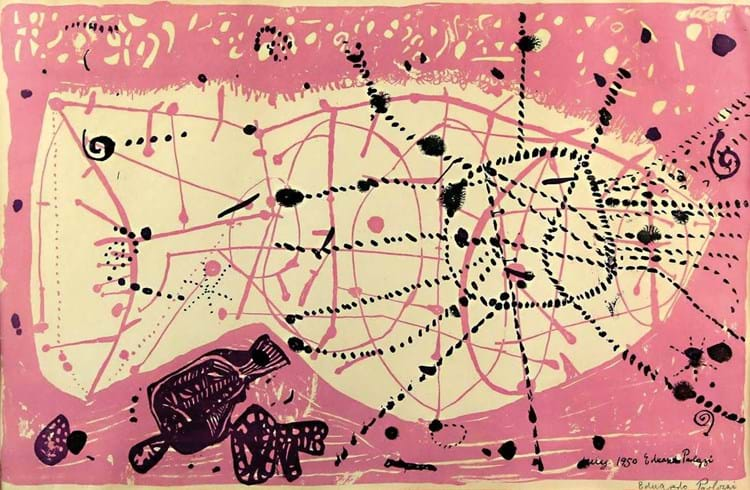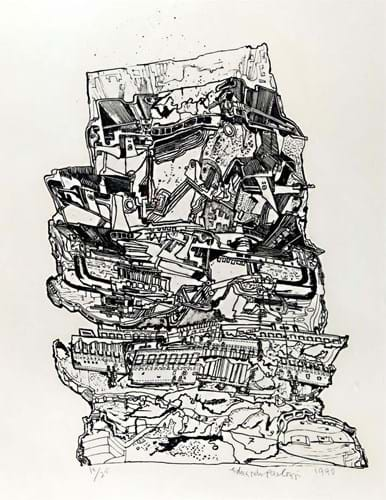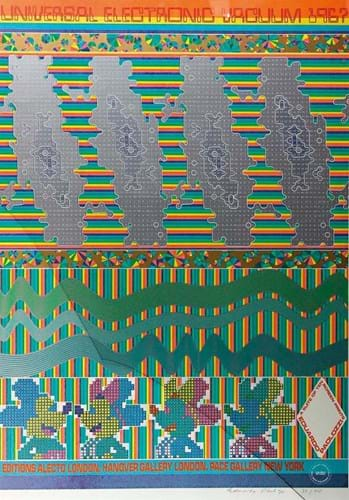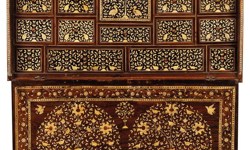Although the upper end of the market for Modern prints has expanded hugely in the last 20 years, opportunities to form an impressive collection also abound at a level that might not break the bank.
Thanks to the nature of multiples, a ready supply of prints by wellknown and often not-so-well-known names is available. And with prices sometimes a fraction of an original and unique picture, it remains one of the areas where plenty of material is on offer for those on a lower budget.
Examples regularly emerge at auctions outside London, both at specialist and general sales. One of the latest was Ewbank’s (25% buyer’s premium) Contemporary Art, Editions & Modern British Pictures sale in Send, Surrey, on January 27.
Partner and auctioneer Andrew Ewbank said: “I feel that that there is good demand for lower and midmarket contemporary editions. In particular, the pricing is important and this in itself drives interest as buyers have the option of bidding on affordable prints by some of the leading names in 20th century art, which also generated a lot of interest in the auction.”
Striking colours
Among the keenly estimated works were 18 prints by Eduardo Paolozzi (1924-2005), the Scottish pop art pioneer whose numerous graphic works appear commonly at auction, even more so than his abundant sculptures. His works are highly distinctive and remain sought after for their intricate details, striking colours, wall-power and the way they often seem to capture the spirit of their time.
Paolozzi prints fetch a fairly wide range of prices at auction. Fivefigure sums are not uncommon (the record is £22,000 for a copy of the screenprint As Is When at Sotheby’s in March 2020) but a large number of works are available for under £1000 too – including some well-recognised, striking and signed examples.
Born to Italian immigrants in Edinburgh, the artist started exhibiting while still a student at the Slade, holding his first solo show of primitivist sculpture and Cubist-inspired collages at the Mayor Gallery in 1947. He began to experiment with prints in the early 1950s, pioneering the technique of producing separate colourways (something which seemingly predated Andy Warhol’s adoption of the process for his screenprints by around four years).
In 1955 Paolozzi established a design company producing wallpaper, textiles and ceramics, and at the same time expanded his printed work, producing series after series of lithographs, etchings and woodcuts. Editions could run from anything from 10 to 500 copies, which partly explains their accessibility on the current market.
Encouraging activity
While two lots here were unsold, the other 16 (which all came from the same source) headed to 10 different buyers; an encouraging sign of an active market.
The highest price came for a print from an edition of 30, making it one of the rarer editions in the Paolozzi canon. Marine Composition, a 13 x 20½in (33 x 52cm) lithograph, showed the artist’s fascination with fossilised creatures and marine motifs – something also reflected in his plaster sculptures as well as other works. It was published by the Redfern Gallery in 1950, giving it an attractive early date and was signed in the margin.
The condition was generally good with only some slight discolouration which was more apparent towards the edges of the sheet. Estimated at £400-600, it drew decent competition and was knocked down at £1300 to a local buyer. The sum was identical to the price the very same print had fetched at Bonhams in September 2008 but higher than the £800 another copy made at Bonhams in November 2011.
Another signed work from a relatively small edition was Landscape, an etching from 1990 which sold at a top-estimate £400 to a Home Counties buyer. Measuring 23½ x 17¾in (60 x 45cm), it depicts a head-shaped collage mixing elements of landscape and machinery.
Part of a series of works demonstrating the artist’s long- held fascination with mechanical objects, it shows sections of railway carriages and pieces of scrap metal all squashed tightly together. Paolozzi created the series by tearing off fragments from his earlier drawings and prints, assembling them back into new compositions and then using pen and ink over the top.
With all this in mind, the price looks pretty reasonable even for a late monochrome work and shows how good value can be found readily in this sector. In terms of how it ranks against other copies of this edition, the only higher auction price was £680 at Roseberys in September 2012 (source: Artprice).
Making the same price but selling to a London buyer was an example of the artist’s colourful screenprints from the 1960s. Universal Electronic Vacuum 1967, a signed 2ft 9in x 23½in (85 x 60cm) impression, was from an edition of 75 prints which were based on a poster advertising the artist’s exhibition held at Editions Alecto in London in November 1967.
Underlining his pop art credentials, it featured images of Disney characters Mickey and Minnie Mouse to the lower section.
Paolozzi produced 10 screenprints for the folio itself, examples of which appear at auction from time to time (a different example made £2000 at Bonhams in July 2018). This one in Surrey, though, was estimated at £200-300 and the £400 price seemed in line with previous prices of this particular print and colourway, even though it suffered from a few condition issues – some slight creasing, minor surface marks and damage to the glazed frame.

Aeschylus and Socrates with Piano String Orchestra 1922, an Eduardo Paolozzi lithograph from 1975 – £360 at Ewbank’s.
The same London buyer secured the 1970s lithograph Aeschylus and Socrates with Piano String Orchestra 1922.
Again, it was part of a series, in this case the nine prints of the Calcium Light Night folio which was named after a piece of music by the US composer Charles Ives with all of the imagery related to orchestral instruments and musical notation. Signed and dated 1975, it came from an edition of 200. Despite some wear, foxing and discolouration to margins, it tipped over a £200-300 estimate to take £360.

















